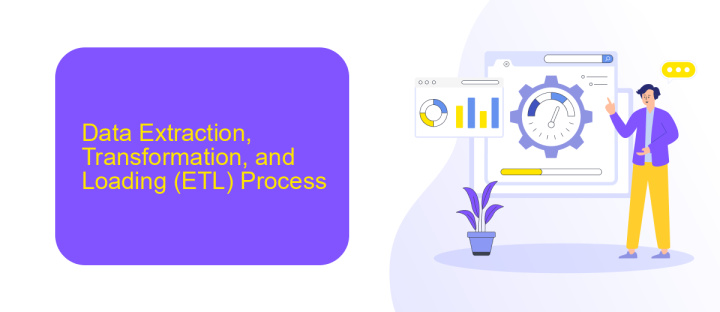ETL Data Warehouse
ETL (Extract, Transform, Load) is a crucial process in the realm of data warehousing. It involves extracting data from various sources, transforming it into a suitable format, and loading it into a data warehouse. This process ensures that the data is accurate, consistent, and ready for analysis, enabling businesses to make informed decisions based on reliable information.
Introduction
ETL (Extract, Transform, Load) processes are fundamental to building and maintaining a data warehouse. These processes enable organizations to collect data from various sources, transform it into a suitable format, and load it into a centralized repository. This ensures that decision-makers have access to accurate and timely data for analytics and reporting.
- Extract: Collecting data from diverse sources.
- Transform: Cleaning and converting data into a usable format.
- Load: Importing transformed data into the data warehouse.
Efficient ETL processes are critical for integrating data from multiple systems. Tools like ApiX-Drive simplify this by offering seamless integrations and automation. ApiX-Drive enables businesses to connect various data sources, automate data flows, and ensure data consistency without extensive coding. This not only saves time but also enhances the reliability of the data warehouse, making it a valuable asset for any organization.
Data Extraction, Transformation, and Loading (ETL) Process

The ETL process begins with Data Extraction, where raw data is collected from various sources such as databases, APIs, and flat files. This phase is crucial as it ensures that the data gathered is relevant and accurate. Tools like ApiX-Drive can simplify this step by automating the extraction process from multiple sources, ensuring seamless integration and reducing manual efforts.
Next is Data Transformation, which involves cleaning, filtering, and enriching the extracted data to meet specific business requirements. This step may include data normalization, aggregation, and applying business rules to ensure consistency and quality. Finally, Data Loading involves transferring the transformed data into a data warehouse or another target system. This phase ensures that the data is readily available for analysis and reporting, enabling organizations to make data-driven decisions efficiently.
Data Warehouse Fundamentals

A Data Warehouse (DW) is a centralized repository that stores integrated data from multiple sources, making it easier to perform analytics and generate insights. It is designed to handle large volumes of data and support complex queries, providing a unified view of the organization’s data.
- Data Integration: Data from various sources is extracted, transformed, and loaded (ETL) into the warehouse.
- Data Storage: The warehouse stores historical data, which can be queried for business intelligence and reporting.
- Data Access: Users can access the data through business intelligence tools, SQL queries, or other analytical applications.
- Data Management: Ensures data quality, consistency, and security within the warehouse.
Effective data integration is crucial for a successful data warehouse. Tools like ApiX-Drive can automate the process of connecting various data sources, ensuring seamless data flow and reducing manual efforts. By leveraging such services, organizations can maintain up-to-date and accurate data, enabling better decision-making and strategic planning.
ETL and Data Warehousing Integration

ETL (Extract, Transform, Load) processes are fundamental to the effective integration of data warehousing. By extracting data from various sources, transforming it into a suitable format, and loading it into a data warehouse, organizations can ensure the consistency and reliability of their data. This process helps in creating a centralized repository that supports business intelligence and analytics.
Data warehousing integration through ETL enables organizations to consolidate disparate data sources, providing a unified view of the information. This integration is crucial for making informed decisions based on comprehensive and accurate data. Moreover, it enhances data quality by cleaning and standardizing data during the transformation phase.
- Extraction: Collect data from multiple sources.
- Transformation: Clean, standardize, and format data.
- Loading: Transfer the transformed data into the data warehouse.
Tools like ApiX-Drive can simplify the ETL process by automating data extraction and transformation, ensuring seamless integration with various data sources. By leveraging such services, organizations can reduce the complexity and time required for ETL processes, allowing them to focus on deriving insights and value from their data.
- Automate the work of an online store or landing
- Empower through integration
- Don't spend money on programmers and integrators
- Save time by automating routine tasks
Conclusion
In conclusion, the ETL process is a fundamental component in the architecture of a Data Warehouse. By extracting data from diverse sources, transforming it into a suitable format, and loading it into a centralized repository, organizations can ensure that their data is accurate, consistent, and readily available for analysis. This process not only enhances data quality but also facilitates better decision-making by providing a single source of truth.
Moreover, leveraging integration services like ApiX-Drive can significantly streamline the ETL process. ApiX-Drive allows for seamless data integration between various platforms, automating data workflows and reducing manual intervention. This not only saves time but also minimizes the risk of errors, ensuring that the data pipeline remains robust and reliable. By adopting such tools, businesses can further optimize their ETL operations, making their Data Warehouses more efficient and effective in supporting business intelligence and analytics initiatives.
FAQ
What is ETL in the context of a Data Warehouse?
Why is ETL important for Data Warehousing?
How often should ETL processes be run?
What are some common challenges in ETL processes?
How can I automate ETL processes for my Data Warehouse?
Apix-Drive is a universal tool that will quickly streamline any workflow, freeing you from routine and possible financial losses. Try ApiX-Drive in action and see how useful it is for you personally. In the meantime, when you are setting up connections between systems, think about where you are investing your free time, because now you will have much more of it.


